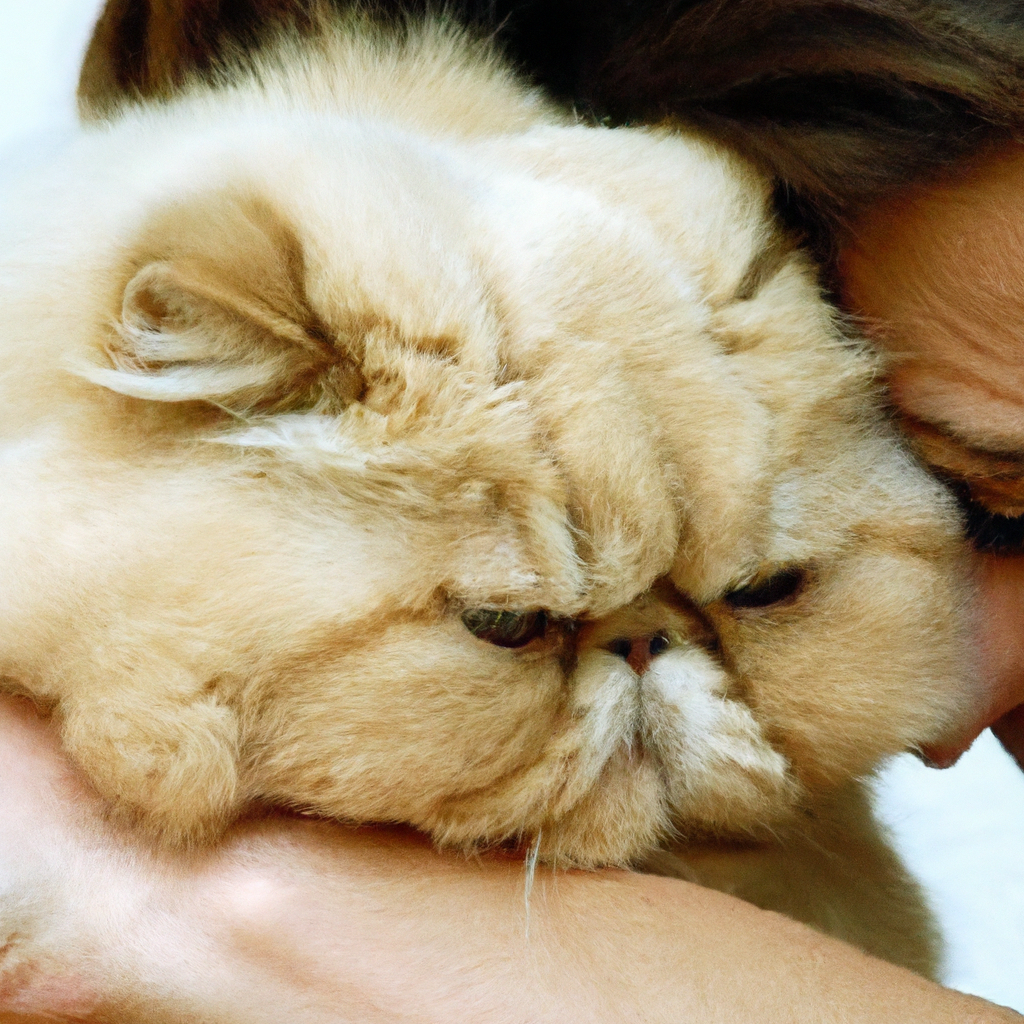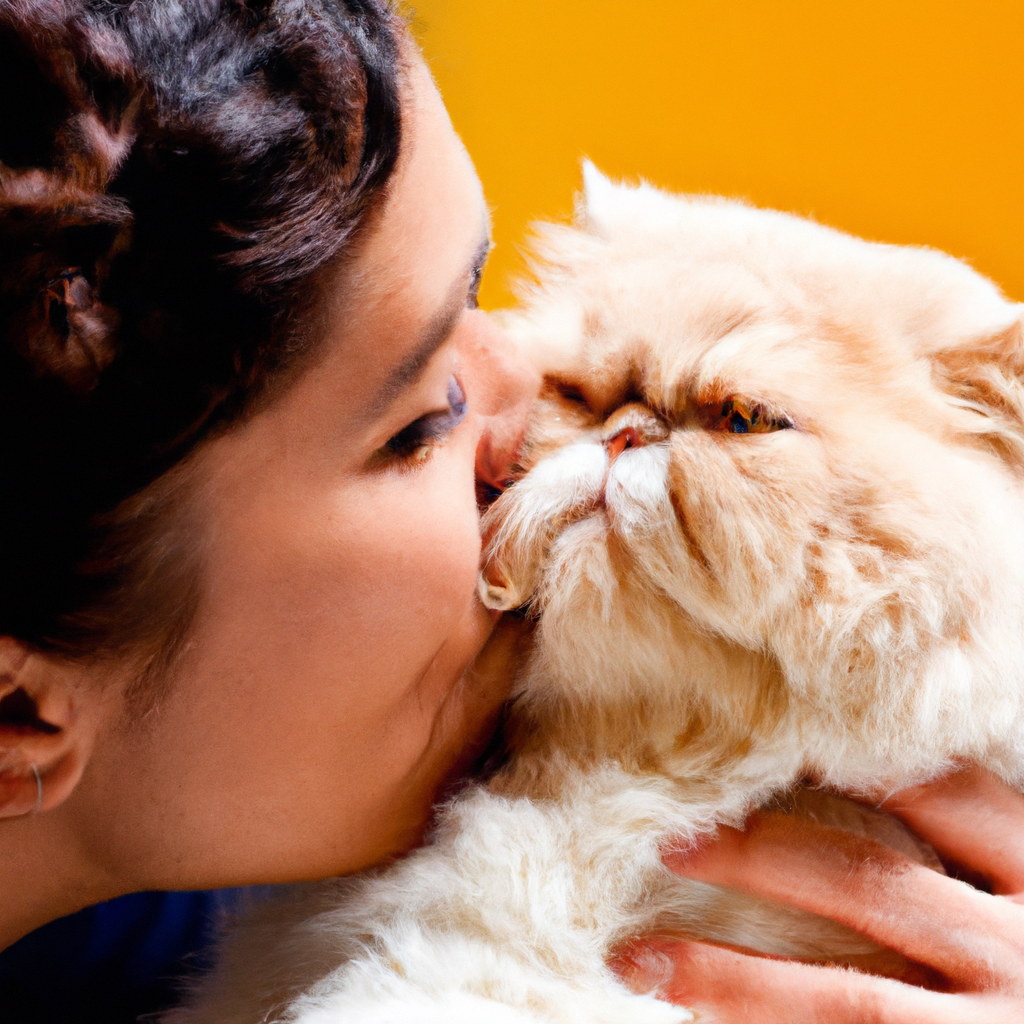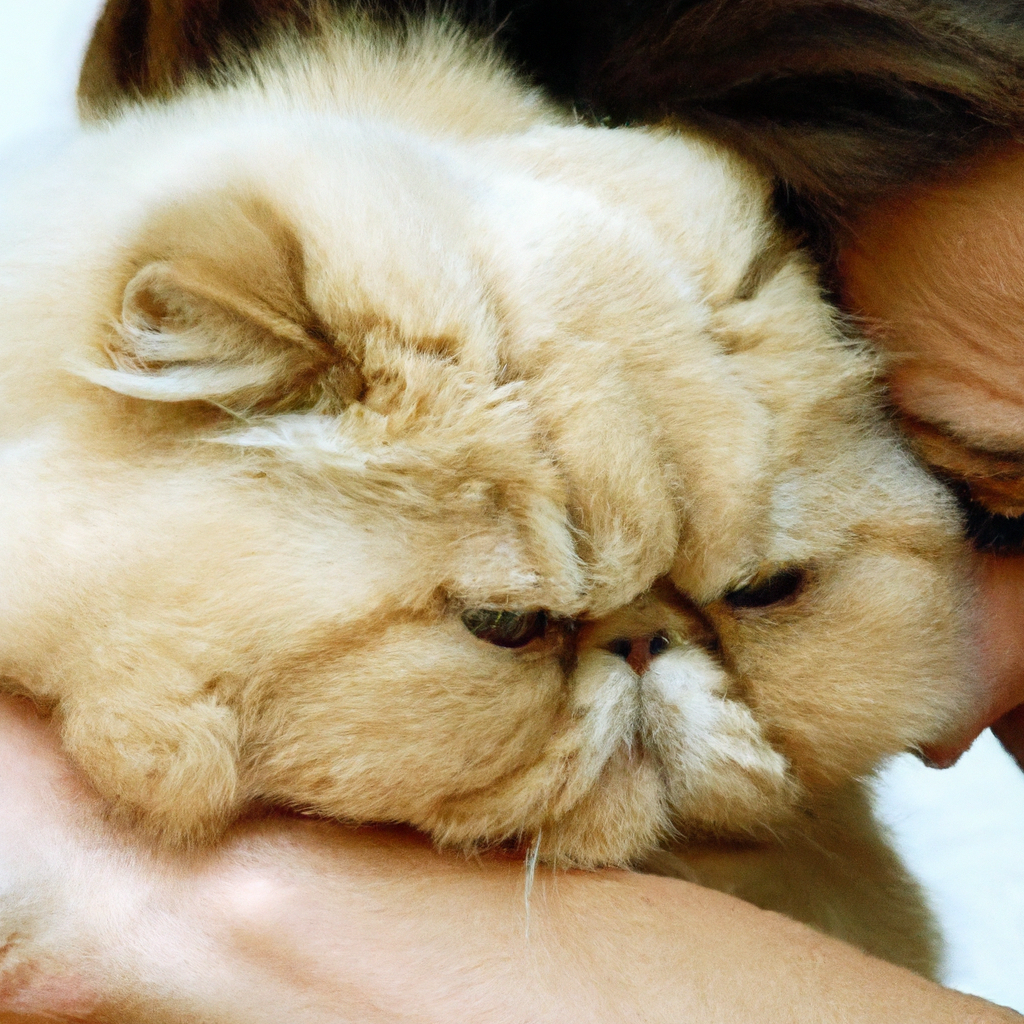Imagine coming home after a long day, feeling tired and stressed. As you step through the door, you are greeted by a beautiful Persian cat with its luxurious, flowing coat and enchanting eyes. Instantly, you feel a wave of calm and affection wash over you as the cat rubs against your legs, purring gently. Persian cats are known for their loving and affectionate nature, always ready to shower their humans with cuddles and companionship. In this article, we will explore the heartwarming and endearing traits that make Persian cats such beloved and cherished companions.
Physical Characteristics
Coat
Persian cats are known for their luxurious and beautiful coats. This breed has long, thick fur that requires regular grooming to keep it looking its best. The coat can come in a variety of colors and patterns, including solid, shaded, and bi-color. The fur is soft to the touch and often has a silky texture.
Body Type
The Persian cat has a distinct body shape, characterized by its round face, short nose, and small, rounded ears. They have a medium to large-sized body with a sturdy build and a low-slung appearance. Persians have short legs and a long, flowing tail that adds to their overall elegance and grace.
Facial Features
One of the most striking features of the Persian cat is its unique facial structure. These cats have large, expressive eyes that are usually round and set far apart. Their eyes come in various colors, including shades of blue, green, copper, and gold. The Persian’s face is adorned with a sweet expression, thanks to its pushed-in nose and adorable flat profile.
Temperament
Gentle and Calm
Persian cats are known for their gentle and calm demeanor. They have a laid-back personality that makes them an excellent choice for families and individuals seeking a peaceful companion. Persian cats tend to enjoy a relaxed and serene lifestyle, spending their days basking in the sun or curled up in a cozy spot.
Affectionate and Loving
If you’re looking for a cat that will show you unconditional love and affection, look no further than the Persian breed. These cats are renowned for their loving nature and thrive on human companionship. Persian cats enjoy being pampered and often seek out opportunities for cuddles and chin scratches. They have a strong bond with their owners and will frequently follow you around the house, offering their unwavering support and affection.
Reserved and Independent
Despite their affectionate nature, Persian cats can also display a sense of independence. They enjoy moments of solitude and may retreat to a quiet corner when they need some alone time. While they appreciate human attention, they aren’t overly demanding or clingy. This independent streak often makes them an ideal choice for individuals who want a loving companion without feeling smothered.

Bonding with Humans
Attachment to Owners
Persian cats form deep and lasting bonds with their owners. They quickly become attached to their human companions and will seek out their company whenever possible. Whether it’s curling up next to you on the couch or sleeping by your side at night, Persian cats will always find ways to show their affection and loyalty.
Reliance on Companionship
Persian cats thrive on companionship and do best in homes where they receive plenty of attention and interaction. They are not well-suited for long periods of solitude and may become anxious or depressed if left alone for extended periods. If you work long hours or travel frequently, it’s important to ensure your Persian cat has suitable companionship, either through another pet or a dedicated pet sitter.
Emotional Sensitivity
Persian cats are known for their emotional sensitivity and can pick up on their owner’s moods and emotions. They have an innate ability to provide comfort and support when you’re feeling down or stressed. Persians are excellent at providing emotional therapy and can help alleviate anxiety and promote a sense of calm and well-being.
Behavioral Traits
Playfulness
Despite their calm demeanor, Persian cats still enjoy playtime. They may not be as active or energetic as some other breeds, but they can be surprisingly playful when the mood strikes. Feather toys, laser pointers, and puzzle toys can all provide entertainment for your Persian cat and help keep them mentally stimulated.
Curiosity
Persian cats are naturally curious and enjoy exploring their surroundings. They may spend hours investigating new scents, inspecting objects, and observing their environment. However, their curiosity is often tempered by their reserved nature, making them less likely to get into mischief compared to more adventurous breeds.
Communication
Persian cats are not particularly vocal, but they do engage in non-verbal communication to express their needs and desires. They may use body language, such as purring, rubbing against your legs, or gently kneading on your lap, to communicate their affection. Paying attention to your cat’s subtle cues will help you better understand their wants and needs.

Interaction with Children and Other Pets
Patience with Children
Persian cats are generally patient and tolerant of children. They have a calm disposition and can often withstand the attention and occasional rough handling that children may unintentionally give. However, it’s still important to teach children how to interact respectfully with cats and supervise their interactions to ensure the well-being of both the child and the cat.
Compatibility with other Cats
Persian cats can coexist peacefully with other cats, especially if they are introduced properly and given time to adjust. They are generally non-aggressive and prefer to avoid confrontations. However, as with any introduction between cats, it’s essential to provide separate spaces, gradual introductions, and plenty of positive reinforcement to promote a harmonious living environment.
Coexistence with Dogs
Persian cats can also adapt well to living with dogs, provided the dogs are cat-friendly and properly introduced. Early socialization and positive experiences are crucial when introducing a Persian cat to a dog. With time and patience, they can form strong bonds and even engage in play and companionship with their canine counterparts.
Maintenance and Care
Grooming Needs
One of the essential aspects of owning a Persian cat is their grooming requirements. Persian cats have long, dense coats that tend to mat easily if not properly cared for. Regular grooming sessions, including daily brushing and occasional bathing, are necessary to keep their coats in optimal condition. Additionally, regular eye cleaning and ear checks are essential to prevent potential issues.
Health Considerations
Like all cat breeds, Persian cats have certain health considerations to be aware of. They are prone to certain genetic health conditions, including polycystic kidney disease, which may require regular monitoring and veterinary care. It’s important to work closely with a reputable breeder and schedule regular veterinary check-ups to ensure the overall health and well-being of your Persian cat.
Nutritional Requirements
Proper nutrition is vital for the overall health and longevity of a Persian cat. They have specific dietary needs, including a balanced diet rich in high-quality protein and low in carbohydrates. Avoiding overfeeding and providing access to fresh water at all times is crucial to maintain their health and prevent obesity, a common issue in this breed.
Training and Socialization
Litter Training
Persian cats are known for their cleanliness, making them relatively easy to litter train. They naturally gravitate towards using a litter box and generally don’t require much training in this area. Providing a clean and easily accessible litter box will help ensure successful litter training and prevent any accidents outside the designated area.
Basic Commands
While Persian cats may not be as trainable as some other breeds, they can still learn basic commands through positive reinforcement training techniques. Simple commands like “sit,” “stay,” and “come” can be taught using treats and praise as rewards. Patience and consistency are key when training a Persian cat, as they may need some time to understand and respond to the commands.
Introducing New Environments
Persian cats can be somewhat sensitive to changes in their environment. When introducing them to new surroundings or situations, it’s important to do so gradually and provide a safe and secure space for them to retreat to if they feel overwhelmed. With patient and gentle introductions, Persian cats can adapt well to new environments and become more confident over time.
Habitat and Living Arrangements
Indoor VS Outdoor
Persian cats are best suited for an indoor lifestyle. Their long, flowing coats are prone to matting and can easily become dirty or damaged in outdoor environments. Additionally, Persians have a calm and reserved nature, which makes them less likely to roam and explore outside. Creating a safe and stimulating indoor environment with plenty of toys, scratching posts, and comfortable resting spots will ensure their well-being.
Suitable Living Spaces
Due to their moderate activity levels and non-aggressive nature, Persian cats can adapt well to a variety of living spaces. They are well-suited for apartments or smaller homes as long as they have ample space to move around and access to fresh air and natural light. Providing multiple resting spots and cozy hideaways will allow them to explore and have quiet moments when needed.
Safety Measures
To ensure the safety of your Persian cat, it’s important to take certain precautions. Keeping windows securely screened, securing any potentially hazardous materials or objects, and providing a safe and confined outdoor space if allowed are essential safety measures. Regularly checking for any potential hazards within the living environment will help prevent accidents and ensure the well-being of your Persian cat.
Persian Cats as Therapy Animals
Therapeutic Benefits
Due to their gentle nature and affectionate personality, Persian cats can make excellent therapy animals. They have a calming effect on individuals and can provide emotional support and comfort in various therapeutic settings. Interacting with Persian cats has been shown to reduce stress, lower blood pressure, and improve overall well-being.
Training for Therapy Work
Before engaging in therapy work, Persian cats should undergo proper training and socialization. This includes exposure to different environments, people of all ages, and various handling techniques. Training sessions should focus on positive reinforcement and desensitization techniques to ensure the cats are comfortable and confident in therapy settings.
Ideal Therapy Settings
Persian cats can thrive in a variety of therapy settings. Their calm and non-threatening nature makes them suitable for hospitals, nursing homes, schools, and other environments where individuals may benefit from their presence. Whether providing companionship to the elderly or comforting children in stressful situations, Persian cats can make a positive impact as therapy animals.
Myths and Misconceptions about Persian Cats
High Maintenance
One common misconception about Persian cats is that they are high maintenance. While their long coats do require regular grooming, daily brushing can greatly reduce the risk of matting and keep their fur in good condition. Additionally, their calm and low-energy nature means they don’t require excessive exercise or stimulation, making them a manageable pet for individuals with busy lifestyles.
Anti-Social Nature
Another misconception about Persian cats is that they are anti-social. While they may be reserved at times, Persian cats are highly affectionate and form strong bonds with their owners. They may not seek out attention as actively as some other breeds, but they still enjoy human companionship and thrive on the love and affection they receive.
Allergenic Properties
Contrary to popular belief, Persian cats are not inherently more allergenic than other cat breeds. Allergies to cats are typically caused by a protein found in their saliva and dander. Regular grooming, including frequent bathing and brushing, can help minimize the amount of allergens present in a Persian’s coat and reduce allergic reactions. Additionally, some individuals with allergies may find they have fewer symptoms when exposed to Persian cats compared to other breeds.
